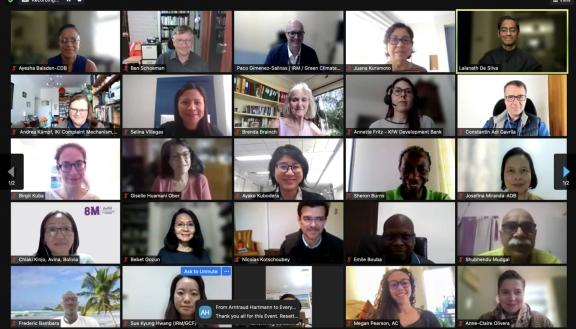Land acquisition and involuntary resettlement. Lessons from the GRAM Community of Practice.
In 2010, some 250 households from the Mubende and Kiboga communities in Uganda were evicted from their homes in forest reserves. A few years prior, the government provided the New Forests Company with a license to operate commercial ventures.
With the support of Oxfam UK, the two communities filed a complaint with the Office of the Compliance Advisor Ombudsman (CAO) in 2011. The communities claimed to have suffered physical and emotional harm from the evictions and were not offered compensation or resettlement by the Ugandan government or National Forestry Authority.
Following the release of an assessment report, the CAO used dispute resolution to facilitate talks between the New Forests Company, the two affected communities, Oxfam and legal representatives. These talks resulted in a framework agreement that allowed the communities to resettle onto forest land, harvest crops and build homes. They also received security of tenure through the newly established Mubende Bukakikama Cooperation Society, which is charged with managing ownership of the land.
The case is a prime example of the IFC’s fifth performance standard (PS5) of the Environmental and Social Safeguards on Land Acquisition and Involuntary Resettlement, which was the main theme during a recent Grievance Redress and Accountability Mechanisms (GRAM) Partnership webinar, hosted on 24th March by the Independent Redress Mechanism.

Tiffany Hodgson, Environmental and Social Safeguards, Gender and Indigenous Peoples Manager at the Green Climate Fund, gave an overview of performance standard five. She outlined how companies are encouraged to avoid involuntary relocation as much as possible, and mitigate the impact on those who are displaced through mitigation measures such as fair compensation and improved living conditions. She also shared some of the important aspects to consider when engaging with stakeholders, including:
- Engage with affected communities during all stages: Planning, implementation, monitoring, and evaluation
- Engage with affected communities to avoid grievances
- Include options and alternatives in decision-making processes
- Ensure the disclosure of relevant information
- Consult with Indigenous Peoples
- Establish a grievance mechanism
Ben Schoeman, a mediator who works with the CAO, shared the example above on the eviction of two communities in Uganda. He talked about some of the challenges that arose during the case.
“One of the complications was that the IFC had invested in an intermediary institution which had then in turn invested in the forestry company. It wasn’t a direct IFC investment in the forestry company but in the intermediary.”
Professor Arntraud Hartmann, Panel Member of the Independent Accountability Mechanism (IAM) of the German, French and Dutch Development Banks (DEG, PROPARCO and FMO) and Dr. Lalanath de Silva, Head of the IRM, shared a compliance review example from Cambodia. The project, funded by an ADB loan, aimed to rehabilitate 642 km of railway and involved the involuntary resettling of over 2500 households. An investigation by ADB’s Independent Compliance Review Panel found that complainants and other affected individuals were not properly compensated or provided with standard replacement housing. Further, many of the resettled families ended up with high levels of debt, falling prey to loan sharks.
The presentations were followed by a group discussion that focused on implementing interim support measures during negotiations, working with difficult actors, leveraging local support on the ground, developing income restoration schemes, remedying delays in compensation and managing disagreements on the side of the complainants.